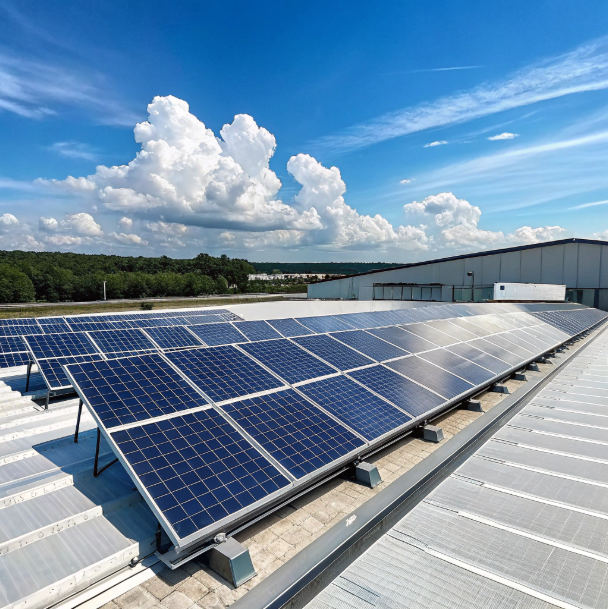Must-Read for Solar Panel Buyers: How to Leverage China's Supply Chain Advantage to Double Profits?
by
Must-Read for Solar Panel Buyers: How to Leverage China's Supply Chain Advantage to Double Profits?
Feeling frustrated by inconsistent solar panel quality and shrinking profit margins? You're not alone - but China's solar supply chain holds the key to transforming your business.
China's solar supply chain offers 30-50% cost savings through mature manufacturing ecosystems, allowing buyers to double profits through strategic supplier partnerships, bulk procurement, and value-added services.
China dominates global solar panel production for good reason - their vertically integrated supply chain and economies of scale create unbeatable value. But navigating this complex market requires insider knowledge most importers lack. Let's explore how to truly capitalize on China's solar advantage while avoiding common pitfalls.
Short Solar Panel Lifespan? You Might Have Overlooked These 2 Key Certifications!
Are your solar panels degrading faster than promised? The culprit might be missing certifications that separate quality manufacturers from the rest.
The two most critical certifications for solar panel longevity are IEC 61215 for performance reliability and IEC 61730 for safety compliance. These rigorous tests verify a panel can withstand 25+ years of operation under real-world conditions.
Understanding Solar Panel Certification Levels
| Certification | Purpose | Key Tests | Impact on Longevity |
|---|---|---|---|
| IEC 61215 | Performance reliability | Thermal cycling, damp heat, mechanical load | Proves 25-year output warranty validity |
| IEC 61730 | Safety compliance | Fire rating, electrical isolation | Ensures safety during entire lifespan |
What most buyers don't realize is that many Chinese factories offer "certified-looking" panels without actual compliance. I learned this hard way when a shipment started delaminating after just 18 months. True certified manufacturers undergo:
- Annual factory audits to maintain certification status
- Random batch testing by third-party inspectors
- Complete test reports available for verification
Always verify certifications directly with TUV or other issuing bodies rather than trusting supplier claims. The extra due diligence pays off in long-term system performance.
Solar Panels Not Meeting Power Generation Targets After Installation? These 4 Procurement Mistakes Might Be to Blame!
Seeing disappointing energy output from your solar installation? The problem often originates from preventable procurement errors.
The top 4 procurement mistakes causing underperformance are: buying purely on price, ignoring temperature coefficients, neglecting mismatch losses, and skipping pre-shipment EL testing. Smart buyers verify STC and NOCT ratings while requiring 3% positive power tolerance.
The Complete Procurement Checklist
-
Electrical Specifications Verification
- Require STC (Standard Test Conditions) and NOCT (Nominal Operating Cell Temperature) ratings
- Confirm positive power tolerance (+3% is ideal)
- Verify temperature coefficient (below -0.35%/°C for poly)
-
Quality Assurance Protocols
- Mandatory EL (Electroluminescence) testing for microcracks
- IV curve testing under sunlight simulator
- Sample destruction testing for laminate quality
-
Logistics Considerations
- Climate-controlled container shipping
- Anti-PID (Potential Induced Degradation) packaging
- Vibration testing certification for transport durability
Price-focused buyers often discover their "great deal" actually costs more per kWh when accounting for early degradation and underperformance. One client saved $120k over 5 years by switching to slightly more expensive but higher-performing panels that met their promised output.
Solar Panel Wholesale Guide: How to Find Reliable Suppliers and Reduce Return Rates?
Tired of supplier inconsistencies and costly returns? Building relationships with vetted manufacturers is the only way to ensure wholesale success.
Find reliable solar suppliers by verifying BOM transparency, requesting factory audit reports, and starting with sample orders. Reduce returns by specifying exact testing protocols in contracts and requiring third-party inspections before shipment.
The Supplier Evaluation Matrix
| Evaluation Criteria | Basic Verification | Advanced Verification | Ideal Standard |
|---|---|---|---|
| Production Capacity | Website claims | Factory visit | Multiple shift production proof |
| Quality Control | Basic ISO cert | Full IATF 16949 | In-house testing lab |
| Material Traceability | General BOM | Cell source certification | Silver paste source disclosed |
| Warranty Support | 5-year basic | 12-year product + 25-year linear | Local service centers |
Key lessons from my wholesale experience:
- Always visit factories personally - Pictures can be deceiving
- Test multiple batch samples - Consistency matters more than one perfect sample
- Build in contractual protections - Penalties for underperformance save headaches
- Develop tiered partnerships - Mix established brands with emerging quality manufacturers
One strategic move that transformed my business was co-investing in preferred suppliers' quality control equipment - this aligned our interests and created exclusive supply arrangements with better pricing.
Conclusion
China's solar supply chain delivers unbeatable value when buyers combine certification rigor, technical procurement standards, and strategic supplier partnerships to maximize lifetime system performance and profitability.
Popular Posts
You may also be interested in:




